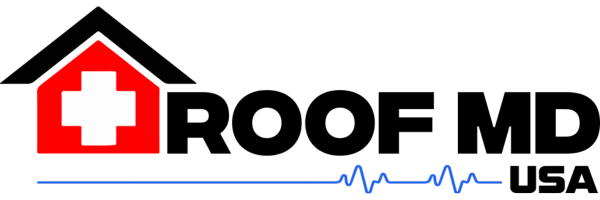When it’s time to replace your roof, you may wonder what does a roof cost. While standard factors like materials and labor are crucial, there are several unexpected elements that can also significantly impact your final bill. Let’s delve into these factors to give you a clearer picture.
1. Seasonal Timing and Weather Conditions
Many people don’t realize that the time of year and prevailing weather conditions can affect roof replacement costs. Contractors are often busier during certain seasons, which could either lead to higher costs or longer wait times. For example, late summer and early fall are popular times for roof replacements due to the favorable weather. If you need your roof replaced during these peak times, brace yourself for higher prices due to increased demand.
On the flip side, scheduling your roof replacement during the off-peak season, such as late winter or early spring, can sometimes save you a significant amount of money. Contractors may offer discounts during these slower periods to keep their crews busy. However, keep in mind that weather conditions will also play a crucial role. Inclement weather can delay the project, potentially adding to the overall cost if the timeline is extended.
2. Roof Access and Complexity
The ease of access to your roof plays a significant role. A roof that’s hard to reach or complex in design can require special equipment or additional labor, driving up costs. For example, houses that have multiple stories, steep slopes, or intricate architectural designs pose more challenges for roofing crews.
Moreover, if your home is surrounded by trees or other obstacles, getting the necessary materials and equipment to your roof can become a logistical hassle. This can result in additional labor hours translating to higher overall costs. Therefore, when asking yourself ‘what does a roof cost?’, include the complexity of your home’s layout in your considerations.
3. Local Building Codes and Permits
Local building codes can vary widely and may require specific materials or additional work. Getting the necessary permits can also add to your expenses. In some regions, stricter building codes ensure that structures can withstand extreme weather conditions such as hurricanes or heavy snowfall. Consequently, meeting these requirements can elevate your roofing costs.
In addition to building codes, acquiring permits is another often-overlooked cost. Depending on your locality, the price for these permits can range from a nominal fee to several hundred dollars. If you fail to obtain the required permits, you could face penalties or be forced to undo completed work, further increasing your costs. Being proactive about understanding local regulations can save you from these unexpected expenses.
4. Historical or HOA Requirements
If you live in a historic district or an area governed by a Homeowners’ Association (HOA), you may need to adhere to particular guidelines, which can increase costs. These guidelines are often in place to maintain the aesthetic and historical integrity of the community.
For example, an HOA may specify certain types of roofing materials or colors that you must use, which could be more expensive than standard options. Similarly, if you live in a historic district, you might need to use materials that match the period’s architecture or even employ specific building techniques. While these requirements help preserve the charm and value of the neighborhood, they can add a considerable amount to your roofing bill.
5. Existing Roof Layers
If your current roof has multiple layers, some areas prohibit adding yet another layer. This means you’ll need a complete removal, which is more labor-intensive and costly. The process of tearing off old roofing materials can be time-consuming and requires proper disposal of the debris, leading to additional expenses.
Moreover, having multiple existing layers can also mean more potential for hidden damage underneath. Issues like mold, rot, or structural weaknesses could surface during the removal process, necessitating further repairs. Each layer that needs to be removed involves more labor and disposal fees, both of which contribute to higher costs. Hence, a thorough inspection before the project begins can give you a clearer idea of what to expect financially.
6. Condition of the Roof Deck
The condition of the underlying roof deck is critical. If it’s damaged or deteriorated, it may need repairs or replacement, adding to the overall expense. A compromised roof deck can’t provide a solid foundation for new shingles, making any new roofing prone to issues.
It’s often difficult to fully assess the roof deck’s condition until the old roofing material has been removed. You might discover areas with water damage or wood rot that need immediate attention. Addressing these issues is vital for the stability and longevity of your new roof but will undeniably add to your costs. Therefore, it’s wise to budget for potential roof deck repairs as a precaution.
7. Special Features or Add-Ons
Chimneys, skylights, and other features can complicate the roofing job. Ensuring these elements are sealed properly can increase both labor and material costs. Such features require precision and specialized materials to integrate seamlessly with the new roof, creating airtight seals that prevent leaks.
For instance, skylights need flashing to divert water away, and chimneys require careful sealing to avoid leaks. The more features your roof has, the more intricate and time-consuming the job becomes. While these additions can enhance your home’s functionality and beauty, they will also elevate the overall cost. These complexities should be taken into account when considering what does a roof cost.
8. Unexpected Repairs
Hidden damage such as rot or mold can turn a simple roof replacement into a more complex project. Being prepared for these possibilities can help manage your budget. Unforeseen issues can arise once the old roofing material is removed, revealing problems that weren’t apparent during initial inspections.
These unexpected repairs are not only necessary for the safety and longevity of your roof but also for maintaining the structural integrity of your home. Regardless of the type of damage, addressing it promptly will help you avoid more severe and costly issues down the line. Therefore, setting aside a contingency budget for these unplanned repairs can provide you with peace of mind throughout the project.
9. Market Conditions and Material Costs
Fluctuations in supply and demand can influence the cost of roofing materials. Market conditions can turn a budget-friendly project into a more expensive endeavor. For instance, natural disasters or significant weather events can lead to increased demand for roofing materials and labor, driving up prices.
In addition, tariffs and trade policies can impact the cost of imported materials like metal or specialized shingles. Keeping an eye on market trends and potential price hikes can help you time your purchase more strategically. By staying informed about market conditions, you can make better decisions and possibly save money on your roof replacement project.


